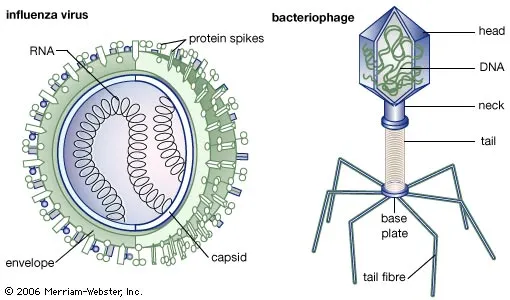Table of Contents
Introduction
- Viruses are small infectious particles consisting of nucleic acid enclosed in a protein coat and, for some viruses, surrounded by a membranous envelope.
- They can be as small as 20 nm in diameter, smaller than a ribosome, and millions can easily fit on a pinhead.
- Stanley’s discovery that some viruses can be crystallized was exciting and puzzling news.
Viral Genomes
- The genomes of viruses can consist of double-stranded DNA, single-stranded DNA, double-stranded RNA, or single-stranded RNA, depending on the type of virus.
- The genome is usually organized as a single linear or circular molecule of nucleic acid.
- The number of genes in the genome of a virus can vary from three in the smallest known virus to several hundred to a thousand in the largest known virus.
Capsids and Envelopes
- The protein shell enclosing the viral genome is called a capsid.
- Capsids can be rod-shaped, polyhedral, or complex in shape, built from a large number of protein subunits called capsomeres.
- Some viruses have accessory structures that help them infect their hosts, such as a membranous envelope that surrounds the capsids of influenza viruses and many other animal viruses.
- The viral envelopes contain host cell phospholipids and membrane proteins, as well as proteins and glycoproteins of viral origin.
- Some viruses carry viral enzyme molecules within their capsids.
- The most complex capsids are found among bacteriophages that infect bacteria.
Conclusion
- The structure of a virus reveals that it is an infectious particle consisting of nucleic acid enclosed in a protein coat.
- The type and number of genes in the genome, as well as the shape of the capsid, varies between different types of viruses.
- Some viruses have accessory structures, such as a membranous envelope, that help them infect their hosts.
- The most complex capsids are found among bacteriophages.
